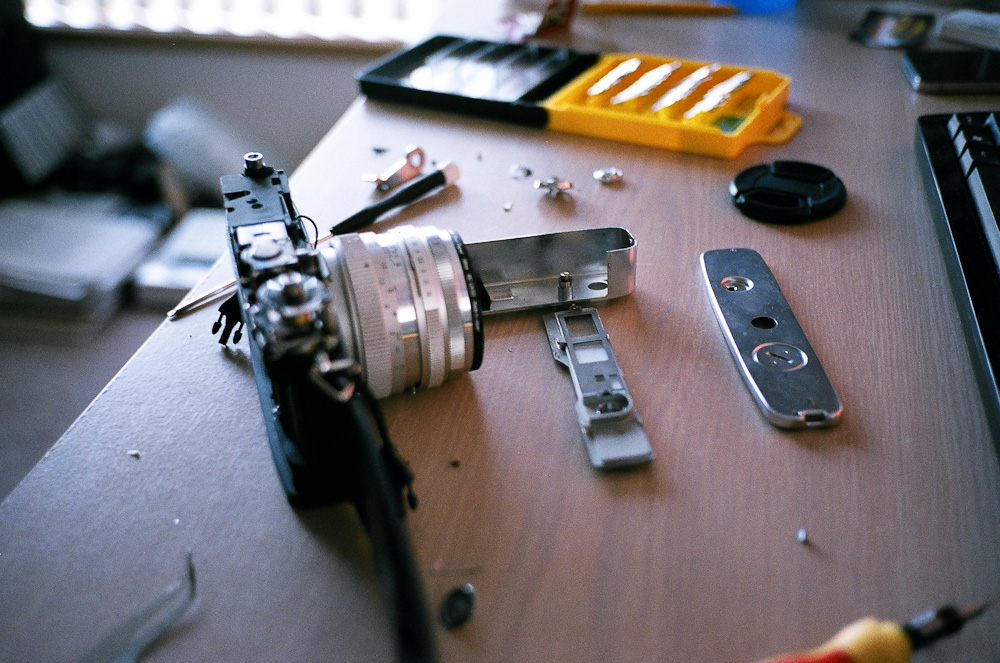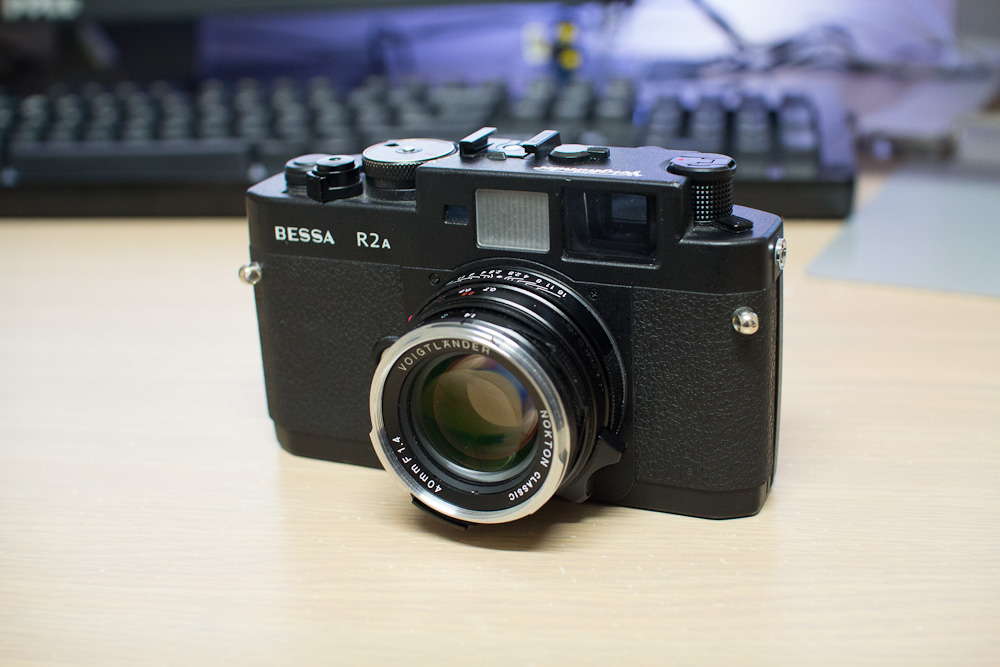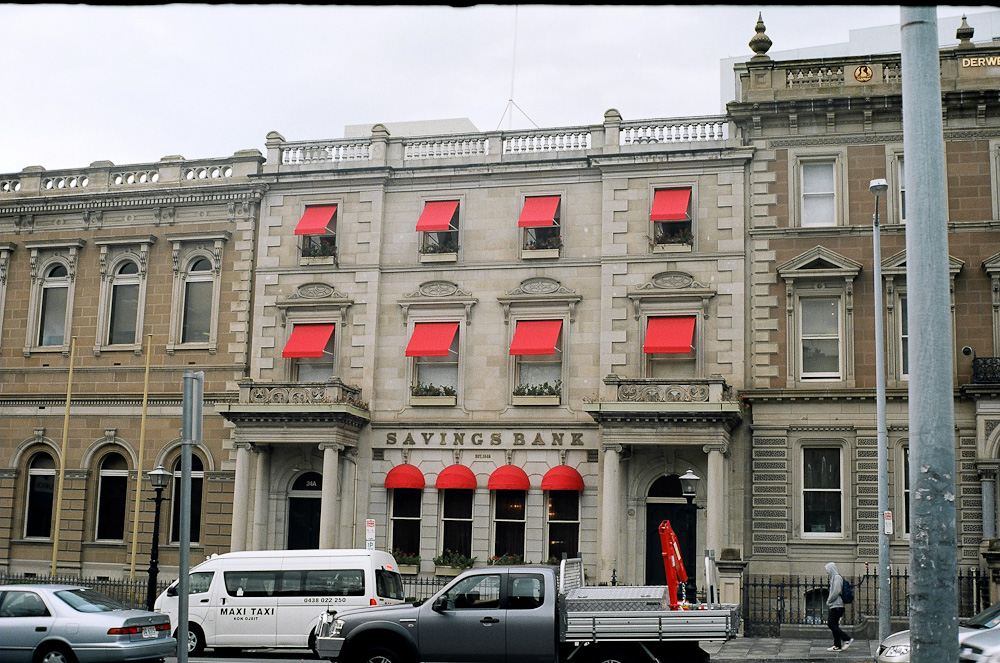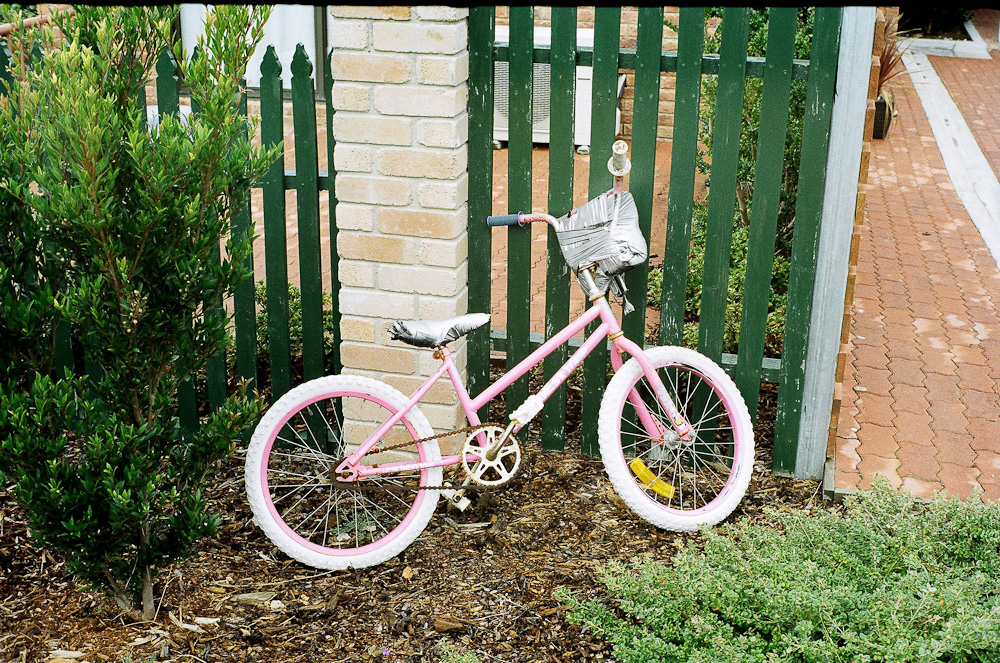I was about 30 exposures into my 13th roll of film when suddenly, the shutter button on my Yashica Lynx 14 just stopped activating the shutter. Quite inconvenient, really. I always wind-on directly after firing off a shot, which cocks the shutter automatically — but somehow, that wasn’t happening anymore. The shutter wasn’t being cocked, even though it seemed to still be advancing film.
I made a short video which explains exactly what was going on.
The shutter was being fired when I was winding on. Not sure how, or why it started happening pretty much spontaneously; I had noticed similar “shutter-not-cocking-after-wind-on” issues a few weeks prior, but I didn’t know it at the time and dismissed it. Resulted in some pretty funky exposures too, since it was opening the shutter after winding on a new frame — mostly shaky, blurry-cam type stuff, but kinda cool in some sort of surrealist way.
I was pretty upset. Shooting with a rangefinder is incredibly satisfying, and seeing as my only rangefinder had just given up the ghost, not shooting with a rangefinder for street just wasn’t an option.
Being an old, fully mechanical camera, I investigated repair options: taking it to the local camera repair shop resulted in a repair bill which could have run into the hundreds of dollars had I chosen to send it off to some gentleman who specialised in older cameras, multiples of what the camera was actually worth (in monetary terms, anyway). I decided to do a little DIY, taking apart the camera and seeing if I could fix the issue myself.
Sadly, that didn’t work due to a lack of understanding about which camera parts did what. I took the entire thing apart (except for the lens assembly), and I still didn’t figure out how it worked. Nothing terribly obvious was wrong with it, which seems a little strange when you consider that it’s a fully mechanical camera, and not some electric-powered everything like the DSLRs of today. But I digress.
I did get the chance to clean out the rangefinder patch and window, though, which has now resulted in a viewfinder that looks fantastic. Shame it doesn’t actually take photos anymore.
Which brought me to an entirely new dilemma: which replacement rangefinder was I going to purchase? Not having a rangefinder wasn’t an option, they’re just too much fun to shoot on, way more portable than a DSLR, and besides,, I don’t mind manual focus. I lusted over a digital rangefinder for about the same amount of time it took to look up the price. Until I start getting paid handsomely for photography, they’re a little out of my price range.
After looking around for a bit, it was a toss-up between two Voightländer cameras: the Bessa R2A, or the Bessa R3A. They’re practically the same camera, but the Bessa R3A has a 1:1 ratio viewfinder, which is pretty cool because it means you can take photos with both eyes open (if you look though the viewfinder with your right eye, that is). Apart from that, they’re both 35mm film rangefinders with built-in auto exposure or metered manual — and if I was going to shoot street, autoexposure was exactly what I wanted, allowing me to set the aperture, focus, and let the camera take care of the rest.
I ended up buying an R2A second-hand, because the store that I wanted to buy from didn’t have any in stock… I also ended up getting the super-popular Voightländer Nokton 40mm f/1.4, perhaps one of the cheapest ($529 new, hah) M-mount lenses that you can buy. Compared to some of the massively-upwards of $2000 Leica lenses, it’s dirt cheap whilst still providing excellent image quality — and by excellent IQ, I mean knock your pants off stuff.
But perhaps the best feature of the Bessa isn’t that it has auto-exposure, or the fact that it’s a reasonably recent film camera (i.e. introduced in 2004, still manufactured today), but the fact that it has the all-heralded Leica M mount.
Ah, Leica. They’re not a brand for the beginner or even for those without deep, deep pockets, but they’re renowned for the simple reason they have some of the best glass in the business. All manual focus, but lenses that are unparalleled when it comes to sheer resolving power and image quality.
The Bessa R2A isn’t really unique in that it’s not the only 35mm film rangefinder that features a Leica M mount, because there are a fair few rangefinders that do — but besides all that, it’s still a (very big) step up from the el-cheapo Yashica Lynx I was using before. Not top-tier (Leica M6/M7/MP-level), but not exactly bottom-barrel, either.
Besides being fantastically built and opening up yet another wide variety of super-expensive glass to lust over, the R2A is really good fun to shoot with.
But that’s for another time.



